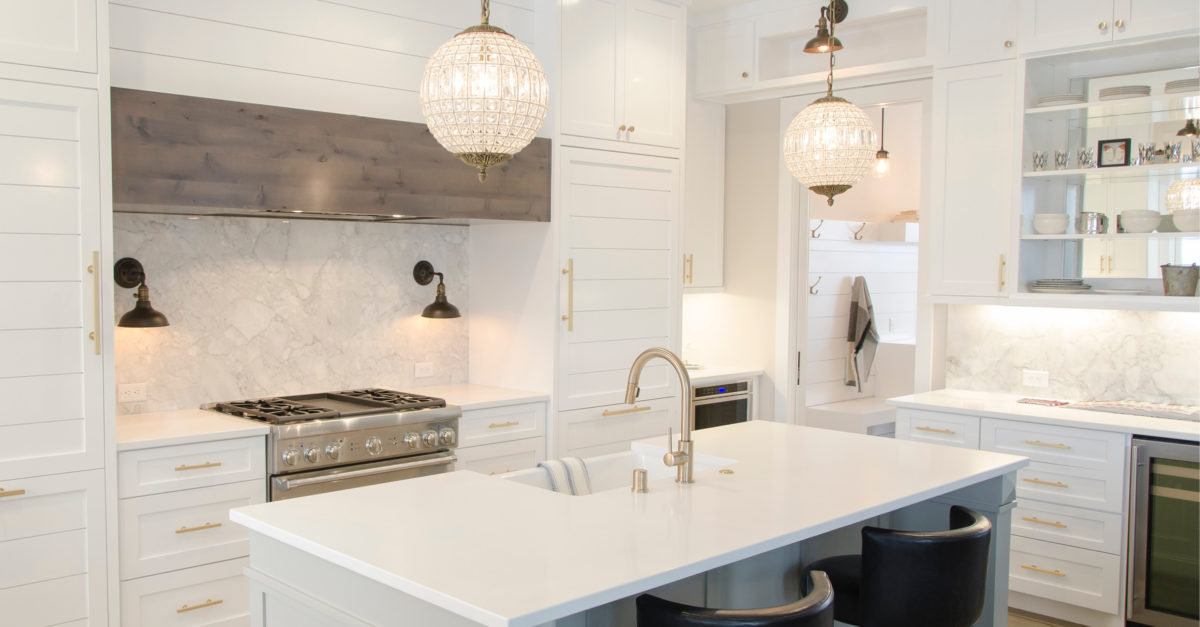The kitchen is perhaps the most important place in American homes. It’s been like this for at least the last 100 years. It not only serves as a place to cook meals but also a gathering place for family conversation and bonding. This is a bit about the American kitchen evolution.
Kitchens are also great markers of how American culture and technological development have changed. They remind us of our biggest achievements. Let’s take a look back at some of the most dramatic changes kitchens have experienced in the last century (with some very cool pics).

1920s
Prior to the 1920s, American kitchens served as more than just places to prepare meals but also as workspaces for other tasks like sewing. With industrialization, came larger living spaces, leaving the kitchen for its intended purpose. There was also an increased emphasis on cleanliness, which gave many middle-class kitchens a sterile appearance.

1930s
Increased efficiency and technology helped American households prepare meals (and clean up from them) more easily. Still, kitchens were still relatively compact. Small gas stoves, ice boxes, and minimal storage could be found in most kitchens.

1940s
Kitchens began to adopt more color, with varying shades of blues, yellows, and reds being the most popular. Expanded storage with built-in cabinets allowed extra room on countertops for preparing meals, and many American’s were now able to afford amenities like washing machines and refrigerators.

1950s
If the 1940s brought more color into American kitchens, the 1950s took this idea and ran with it. When we think of this time period, many of us think bright floors and cabinets, teal appliances, and “futuristic” looking cooking tools. All of these were common in the 50s, but this was also a time when the kitchen became a focal point of the home.

1960s
As more women began to leave home for work, kitchens adapted technology to make family’s lives easier. While refrigerators and dishwashers were already growing in popularity, the 1960s made these appliances even more common in homes.

1970s
Patterns, patterns, patterns—the 1970s was all about filling your kitchen with the busiest patterns you can find (think brown and gold floral curtains and orange countertops). This was also the decade of the microwave—as many as one million Americans reported owning a microwave by 1975.

1980s
Kitchens expanded to include islands and inventive bench seating at the latter half of the century to accommodate for hosting and larger parties gathering in this space. A combination of both old and modern accents, like laminate cabinets with wood trim, became increasingly popular as Americans were caught between styles of the past and the oncoming digital age.

1990s
Gone are the days of teal refrigerators and pink stoves. The 90s brought a return to simplicity with light wood cabinetry (sans handles) and all white, or sometimes black, appliances. The island became an official staple in most homes as the kitchen became the center of hosting, as opposed to living areas.

2000s
Tile countertops are officially out, and more elegant granite and stone tops are in. Wood cabinetry is still a major staple in American kitchens, but appliances are inset into walls to take up as little space as possible. There are also now thousands of kitchen gadgets available—from food processors to deep fryers, causing an increase in kitchen size to accommodate more storage space.
The kitchen has been a cornerstone in American homes for decades, and a closer look can tell us a lot about how much our lives have changed in just a short amount of time. And better yet, the American kitchen revolution continues.
Want to see some amazing kitchen in your area? SEARCH HERE!
As always, feel free to contact me if you have questions.

